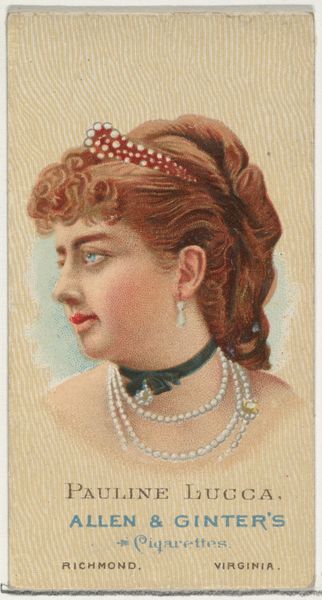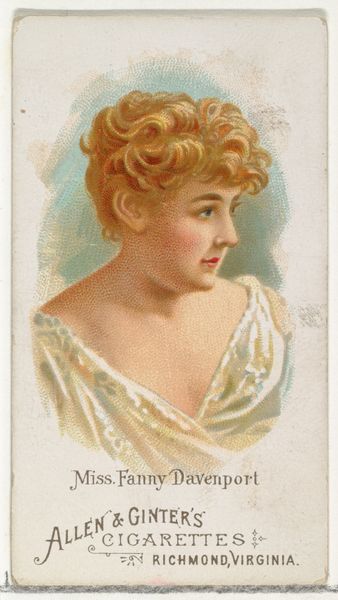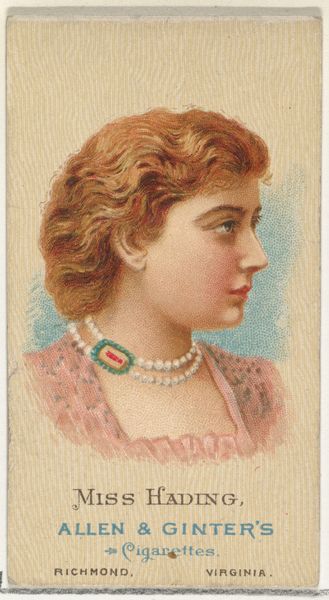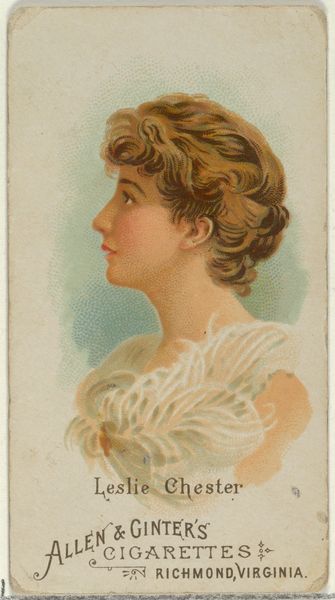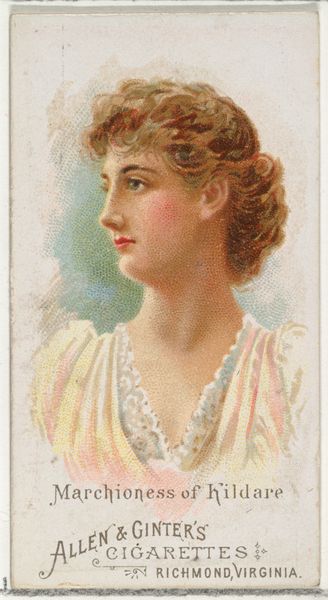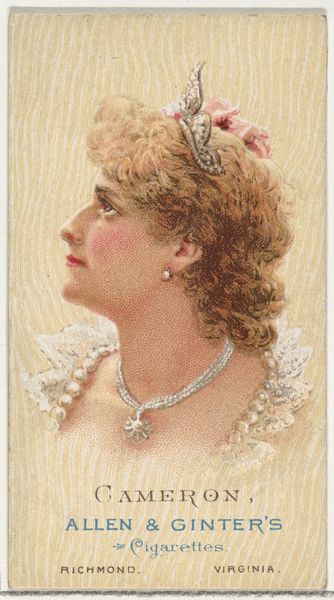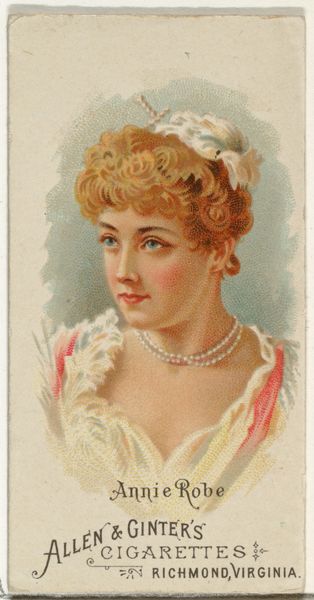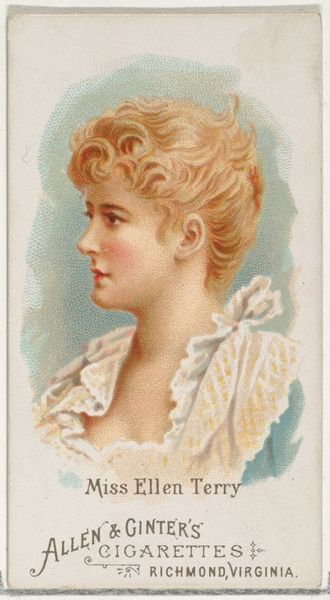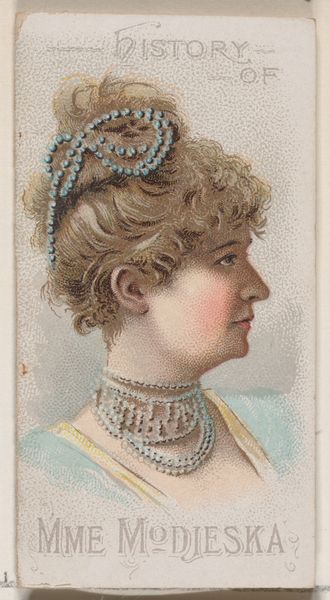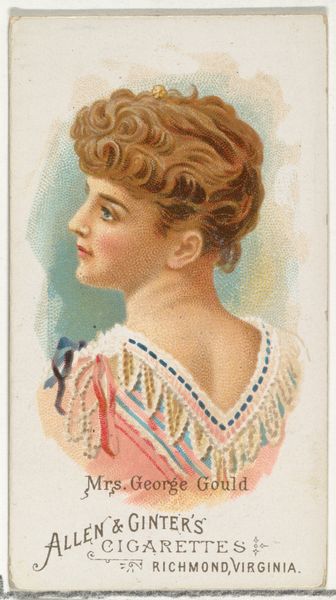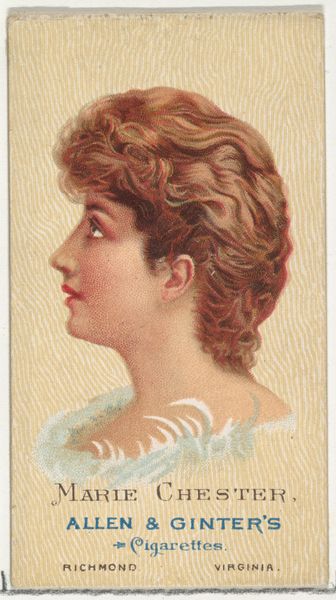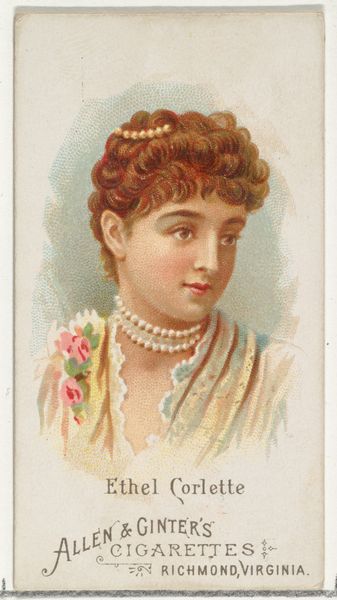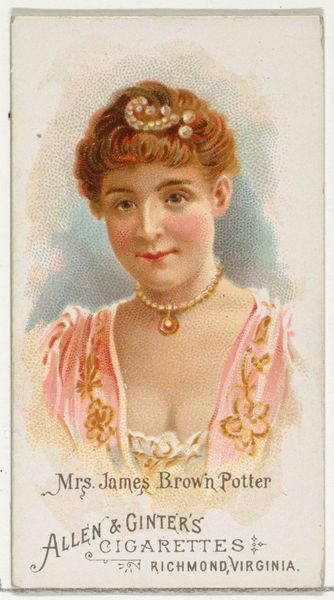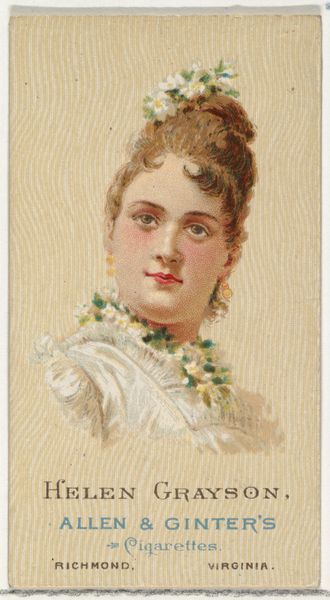
Ada Richmond, from World's Beauties, Series 2 (N27) for Allen & Ginter Cigarettes 1888
0:00
0:00
drawing, coloured-pencil, print
#
portrait
#
drawing
#
coloured-pencil
# print
#
impressionism
#
coloured pencil
Dimensions: Sheet: 2 3/4 x 1 1/2 in. (7 x 3.8 cm)
Copyright: Public Domain
Curator: This small but striking piece is entitled *Ada Richmond, from World's Beauties, Series 2 (N27) for Allen & Ginter Cigarettes*, created around 1888. The piece consists of color pencil drawings, ultimately appearing in printed form as an advertising card. Editor: It’s so poised! Even within the confines of the small card format, it feels both delicate and very self-assured. Curator: Allen & Ginter was a prominent tobacco company, and these cards featuring actresses and notable women were inserted into cigarette packs. It was a common marketing tactic, appealing to consumers through ideals of beauty and fame. The representation of women here is interesting considering the context of commercialism and societal expectations. Ada Richmond herself, what can we discern about her as an individual, beyond being merely a visual enticement? Editor: Exactly. The way she's presented—pearl necklace, elegant hairstyle—reflects a certain ideal, yes, but one that’s actively consumed. Her likeness becomes a product. I would explore what level of agency she had over her image during this historical moment. This image is ultimately complicit in capitalist desire and its construction of beauty as a commodity, but where might her image exist beyond the cigarette package? Curator: The format itself played a role. These were mass-produced items. So how does this portrait both uphold and potentially challenge traditional portraiture within the Victorian era? Can we consider this as both a portrait of an individual and a representation of constructed desire? Editor: Good point. It pushes at portraiture's assumed relationship between the "inner" person and the "outer" representation of wealth and beauty. While it certainly upholds dominant beauty ideals of the time, in the face of rapid industrialization, its small size signals that she is indeed a packaged fantasy, not an autonomous being, accessible as a capitalist desire. Curator: Considering its context as a consumer good complicates our understanding of beauty standards. So how does it affect our reading that a contemporary institution like the Metropolitan Museum holds such a piece? Does this impact the card's ability to express the original purpose that it was constructed under? Editor: Seeing it here asks us to reconsider its value. As cultural output it serves to both reflect and reinforce gender dynamics and economic forces. We must always be aware of its legacy, I suppose. Curator: Ultimately it becomes a testament to the pervasiveness of consumer culture and the historical construction of gendered ideals within commercial frameworks.
Comments
No comments
Be the first to comment and join the conversation on the ultimate creative platform.
